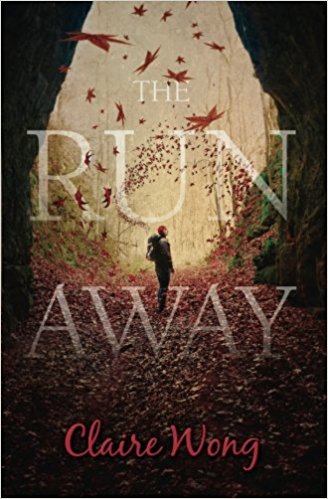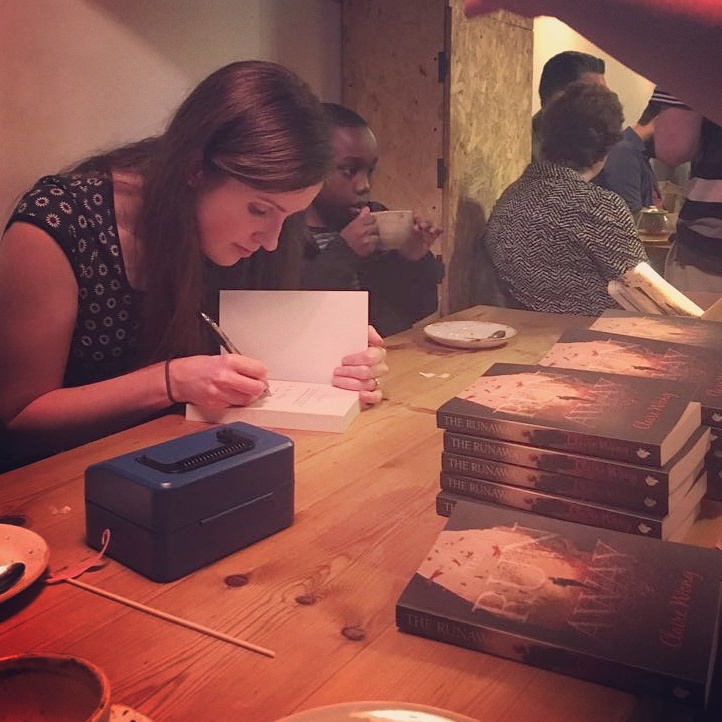Yesterday was the first instalment of my interview with the lovely Claire Wong. Today, the questions focus on her debut novel, The Runaway, which I reviewed here.

How did The Runaway come to be published?
It was a combination of research and accidental good timing! I decided not to submit it to anyone until I’d learned more about how publishing worked. I didn’t want to make the kind of mistake that would annoy an editor and make them throw away my manuscript. So I spoke to people I knew in the publishing industry for advice, which led to me contacting Jess Tinker at Lion Hudson and asked if she could spare me half an hour to answer some questions I had and she kindly agreed. That was such a helpful conversation, and also how I learned about Lion’s ethos, which I really liked. It so happened that Jess was looking for new submissions for novels, so she invited me to submit The Runaway to her. I said yes very calmly and then after I put the phone down I danced around my living room! It went from there and a few months later they offered me a contract.
Could you describe a little how you came to develop the story and characters, and how engrossed you became with the story?
Rhiannon’s decision to run away was my starting point, and it all went from there. It followed quite naturally that she would run away to the woods rather than anywhere else: in European folklore and fairy tale the forest is typically a wild lawless place where strange things happen, in addition to which I loved playing in the nearby woods as a child so it’s a setting I know well.
I found during the editing stages that the particular section I worked on that day could have a big impact on my mood. I was noticeably lower when working on the first section of the book, but became much happier once things improved for the characters! But I carried on going into work and carrying on with my normal life, and most people didn’t know I was writing a book until I had a publishing deal.
The setting is a Welsh village – quite natural for you as you are originally from Wales. Were the characters based on people you know to a certain extent too?
It’s perhaps inevitable that the people we know have some influence on the characters we imagine. I have met someone very like Diana, and it seemed to me that she would fit perfectly into a village like Llandymna, where there would be all sorts for her to organise! For Adam and Grace I drew on some of the key people who have had a positive impact on my life through their words and their kindness. I think we all need to know a few people like them in the course of our lives.
The female characters in particular are very strong in the book. Was that intentional? The wise Maebh offsets the overbearing, seemingly authoritarian Diana and the patient and kind Grace offsets the headstrong Rhiannon – how did you ensure a balance in the overall set of characters you created?
Well, with Tom being the village policeman and Adam having the makings of a local hero, I was determined not to end up with a story where only the men got to save the day and fix the women’s problems for them! So it was important for me that the female characters influenced the plot and overcame obstacles just as much as their male counterparts.
I think for me a key way of creating balance was to give these women very different outlooks on life, and let their characters form around those views. I think of Maebh as someone who, had things turned out differently, would have been matriarch of a large family – the beloved grandmother to many! So she sees the village as her family, whereas to Diana the village is her career and every interaction is part of her work. Rhiannon is someone who thinks only she is insecure, frustrated and terrified of what the future holds, which leads to her independence and lack of trust, whereas Grace understands that everyone else around her is struggling in their own ways, and because she sees that she can show kindness to others.
Storytelling traditions are highlighted a lot in the book – was oral storytelling a big part of your childhood or is there another reason you wanted to feature it?
I grew up having stories read aloud to me by family members, especially my mother and grandmother, and I remember being transfixed by a professional storyteller who could really bring myths and legends to life with his words. It’s something I got to study in more detail at university too, when I read the Iliad, a poem that ancient bards would memorise, which strikes me as an amazing thing.
What really fascinates me, though, is to what extent we are the product of the stories we grow up hearing, and how we can use storytelling to shape the world.
How difficult was it to finish writing the book and how did you feel once the editorial process had finished?
I dodged it for quite a while. For a long time the book actually had a different ending: one which was much easier to write but not what the book needed. There’s a scene towards the end where some characters say goodbye and that was the last thing I wrote because I put it off for so long! I’ve never liked goodbyes.
Once I was done, it was quite hard to move on to a new book and a new set of characters. I did get very attached to the cast of The Runaway, but at least now that it’s published I can enjoy asking readers who their favourite character was. I get a wide range of answers that I find very interesting!

You are already working on your next novel. Could you tell us a bit about that?
Gladly! A Map of the Sky is a story through the eyes of a ten-year-old boy called Kit, whose family have suddenly and without explanation moved to a remote spot overlooking the wild North Sea. In his quest to solve this mystery, he meets a strange mix of other people who’ve come to the same place to escape parts of their lives, and he makes it his mission to fix their problems. It’s a story about chronic illness, hope and how to be a hero in a world where there aren’t any dragons to slay.